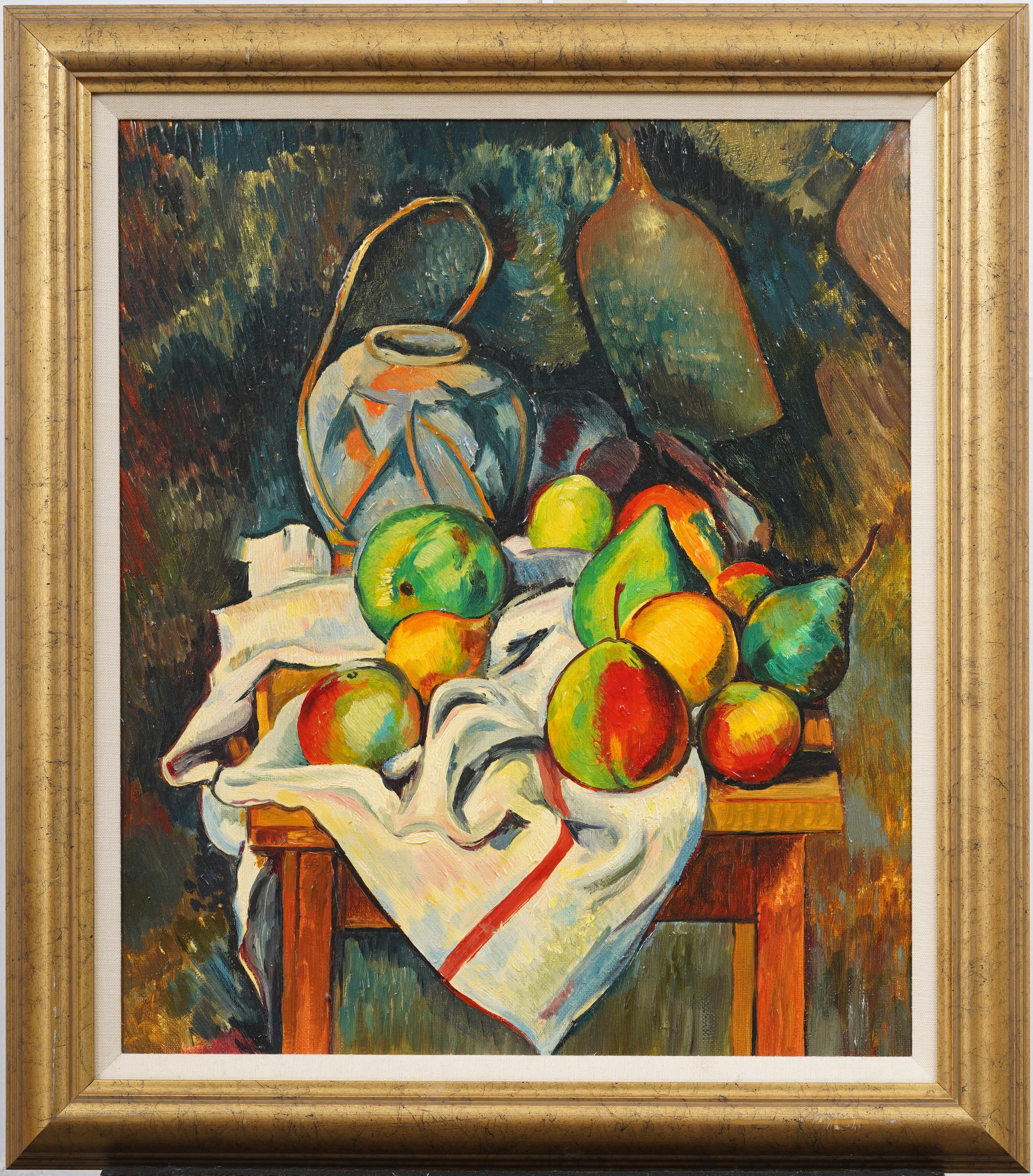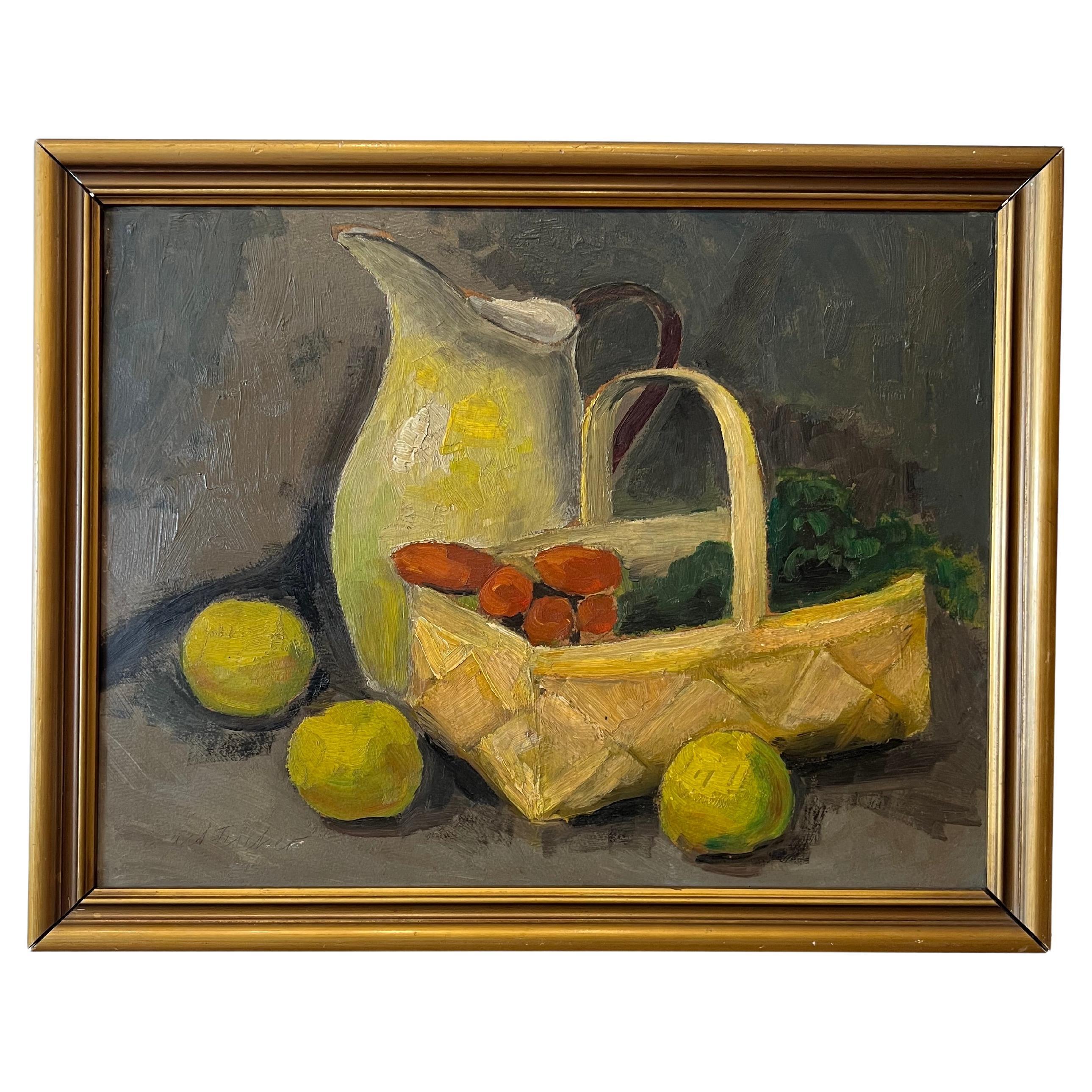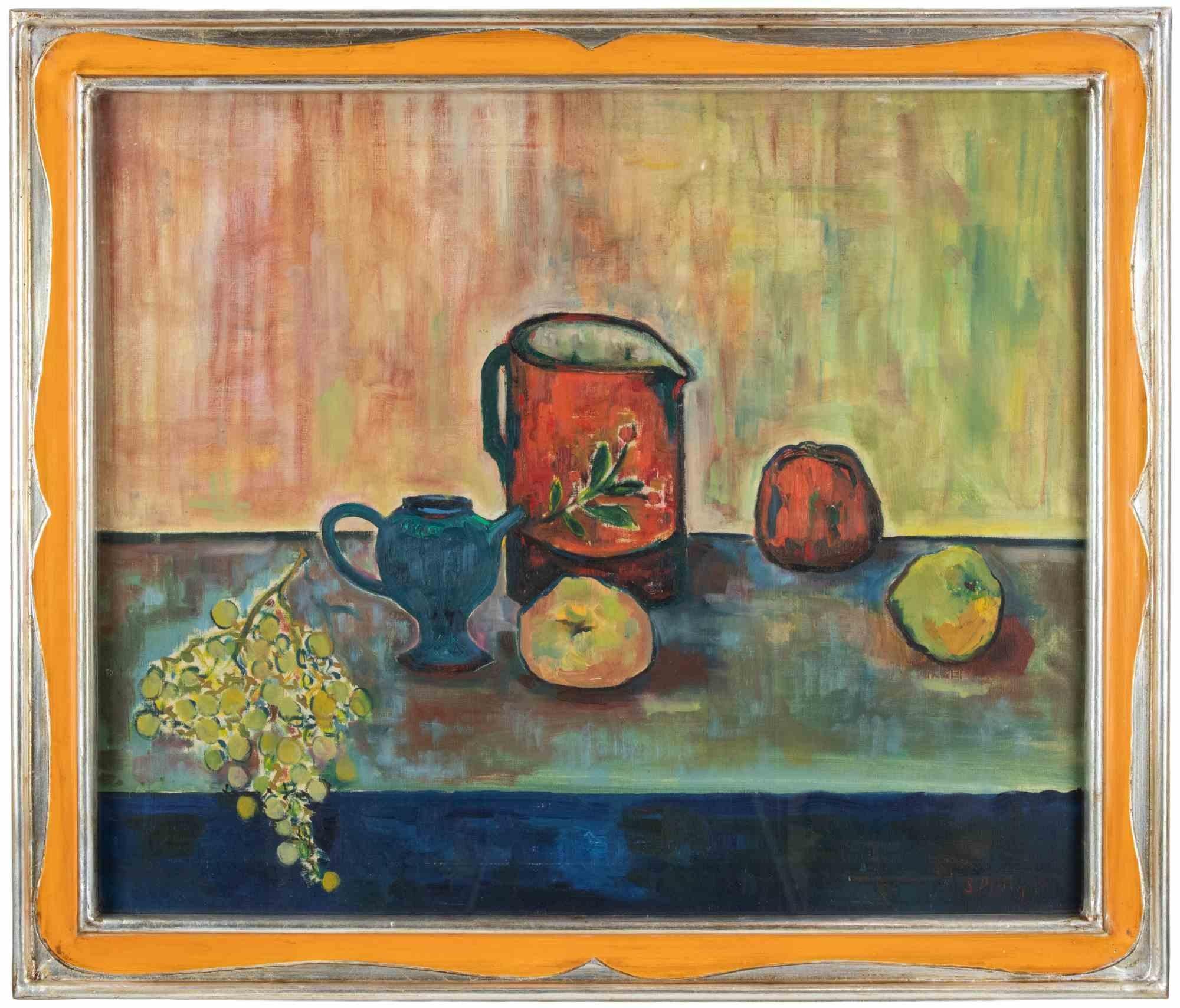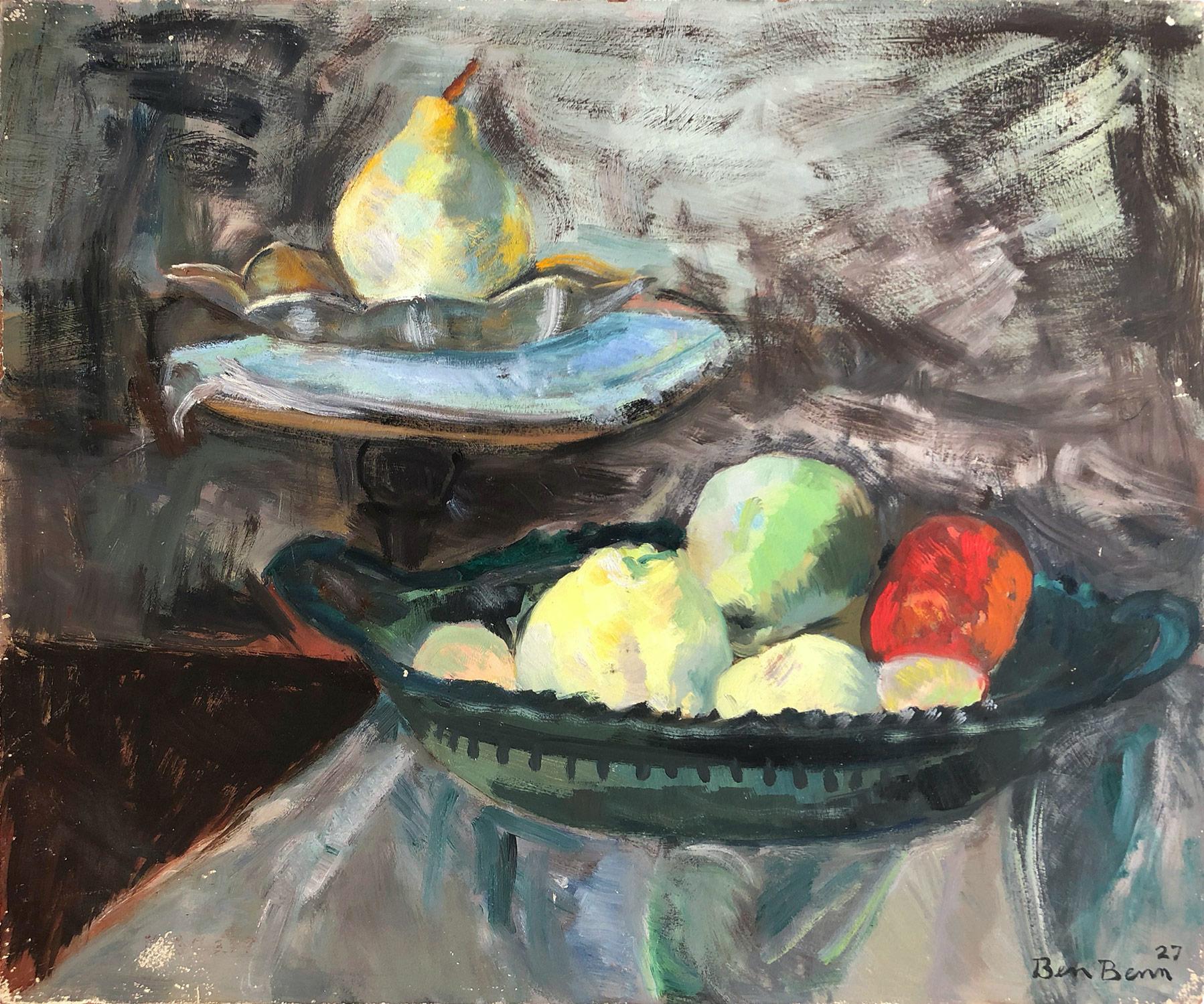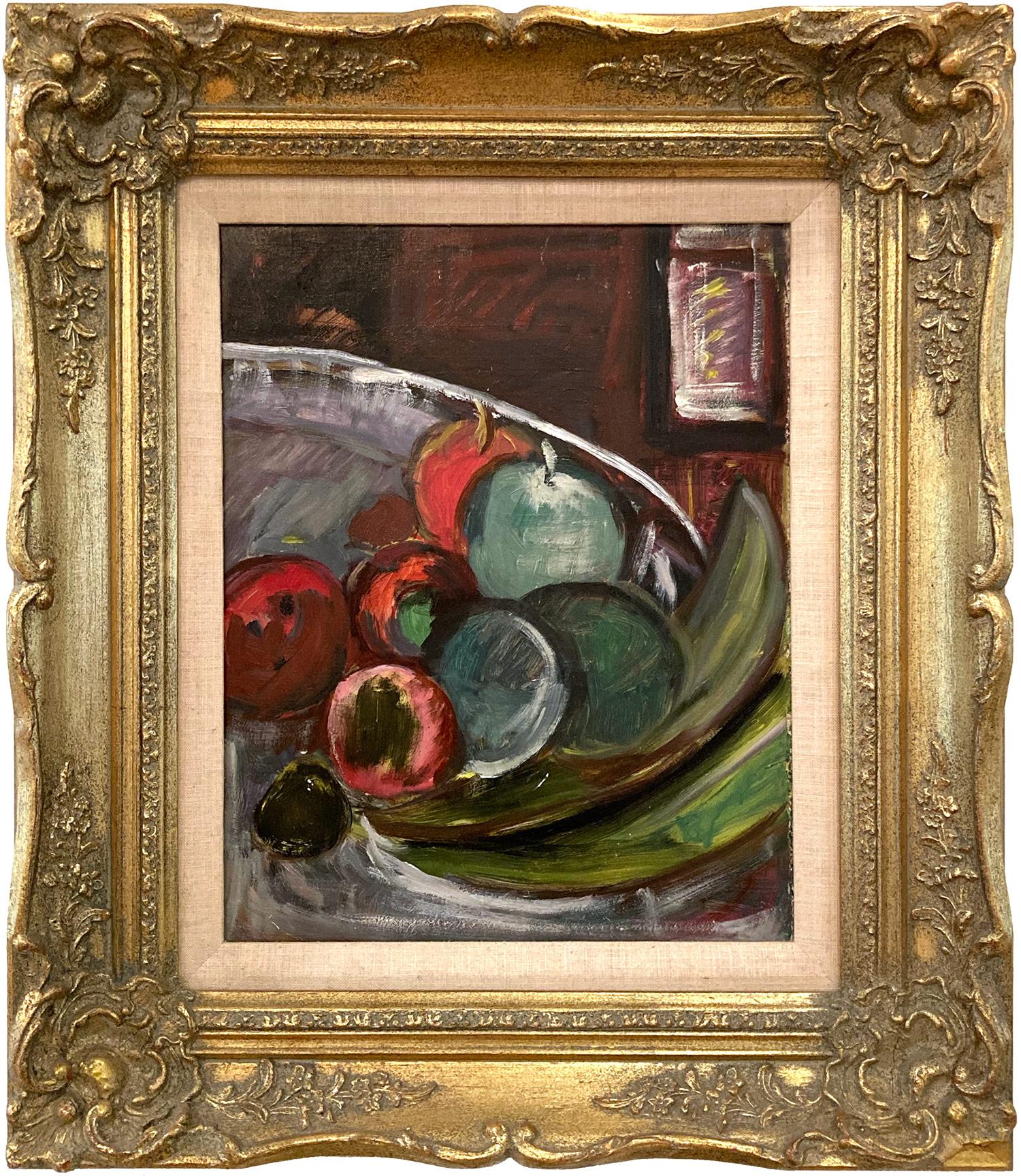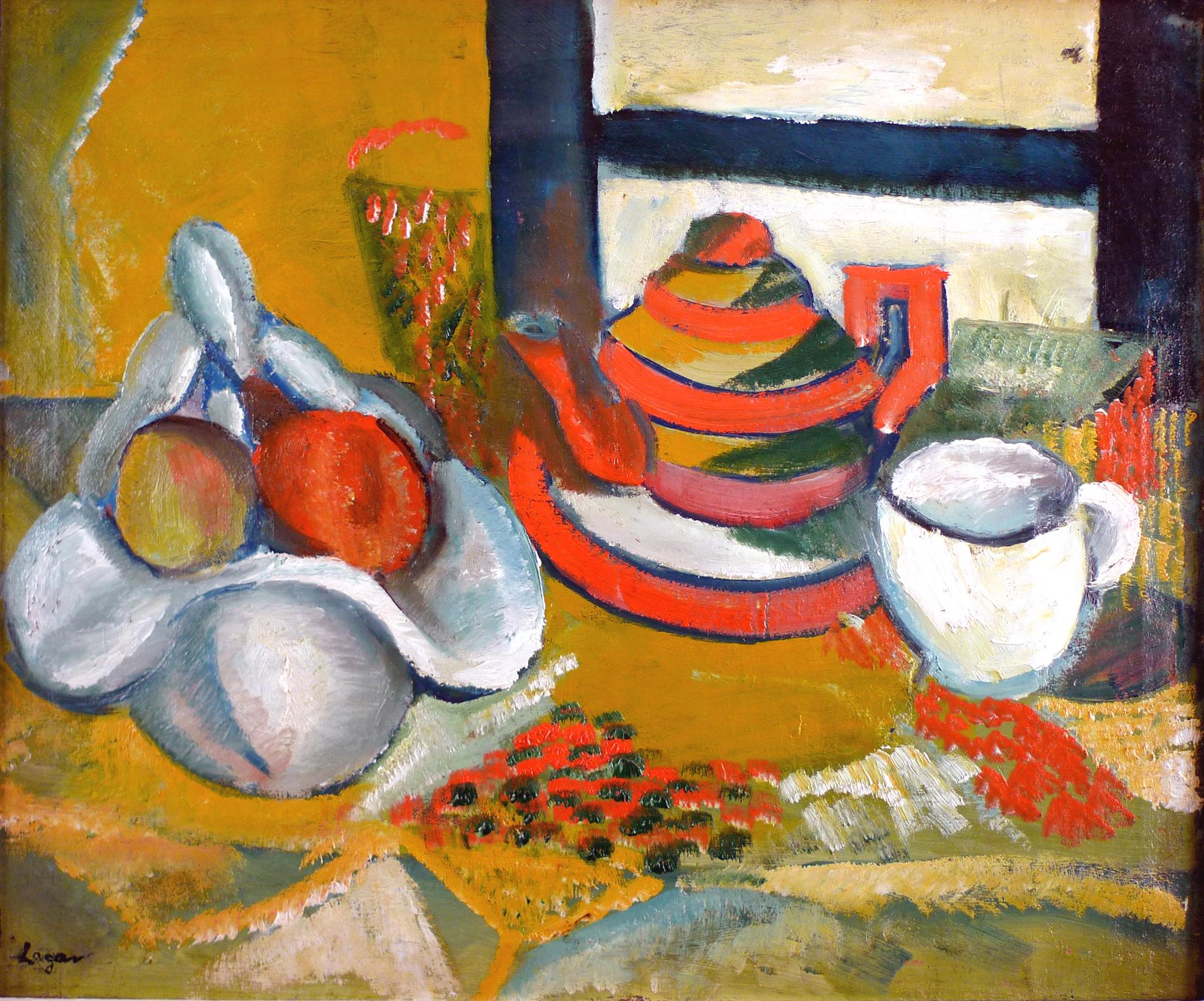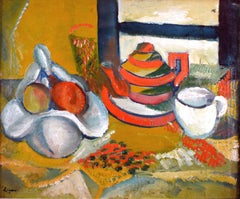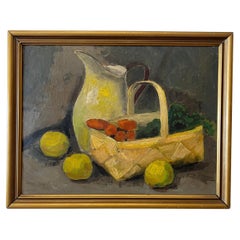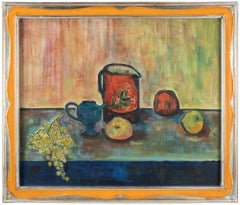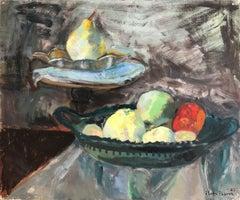Items Similar to "Still Life with Fruits", Large, Early 20th Century Oil on Canvas by Celso Lagar
Want more images or videos?
Request additional images or videos from the seller
1 of 14
Celso Lagar"Still Life with Fruits", Large, Early 20th Century Oil on Canvas by Celso LagarEarly 20th Century
Early 20th Century
$41,502.51
£30,839.72
€35,000
CA$57,441.92
A$63,966.15
CHF 33,398.19
MX$775,068.49
NOK 421,186.45
SEK 397,422.61
DKK 266,496.31
About the Item
CELSO LAGAR
Spanish, 1891 - 1966
STILL LIFE OF FRUITS
signed "Lagar" lower left
oil on canvas
29-3/4 x 38 inches (75 x 96 cm.)
framed: 33-1/2 x 41-3/4 inches (84.5 x 105.5 cm.)
PROVENANCE
Private French Collector
Celso Lagar Arroyo (Ciudad Rodrigo, 1891 - Seville, 1966) was an expressionist Spanish painter of the first generation of the School of Paris, where he lived most of his life. He was influenced by avant-gardes of all kinds, such as cubism and fovism. He painted mainly landscapes and still lifes. From a personal point of view, he is a depressive person and completely dependent on his wife, the French sculptor Hortense Begué.
From his native Ciudad Rodrigo, he went to Madrid to be part of the workshop of one of the best sculptors of the moment, Miguel Blay.1 During 1910 and 1911 he visited Barcelona. Later he studied sculpture in Paris in 1911 advised by Blay, where he met Joseph Bernard, his friend Amedeo Modigliani and his future wife, the French sculptor, Hortense Begué. It will be precisely at that moment when, gradually, he leaves the sculpture in favor of painting.
The outbreak of the First World War will mean, in the life and work of Celso Lagar, the beginning of a new stage. He remained in Barcelona during the war, where he achieved a certain recognition, which allows him to return to Paris. In 1919 he settled permanently in France. His time until the end of the 30s, is the moment of his greatest splendor of the artist. He manages to exhibit his works in the best Parisian galleries, his production is abundant and constant. Both in his residence in Paris and in his rooms, since 1928, in Normandy he will develop an artistic production with very specific themes: still lifes, Spanish reminiscences, landscapes and his celebrated circus scenes. After the period of avant-garde influences of all kinds (Cubism, Fauvism, Vibrationism, Biologism, Simultaneism, Ultraist, ...), Celso Lagar will find his own path marked mainly by Goyesque and Picasian inspiration. Critical and public recognition increases.
With the onset of World War II, its golden age will end. Lagar and Hortense are forced to take refuge in the French Pyrenees amid very difficult living conditions. His return after the liberation of Paris did not have such an impact. Lagar will continue with the same themes and techniques before the war but the public is already looking for new content. Gradually, success fades and economic hardships affect the couple.
At this time around the year 1950, his wife Hortense enters the hospital Broca and in 1955 dies. Lagar falls into a deep depression and will enter the psychiatric hospital of Sainte Anne. His artistic work ends completely. At that time, by court order, two auctions of the works that remained in his workshop are held, to pay for his stay in the asylum. In October 1964 he returned to Spain living in Seville with a sister until his death on September 6, 1966.
His paintings are found in numerous museums throughout Europe, such as: La Rochelle, Goya Museum in Castres, Honfleur (France), Petit-Palais de Geneva, Reina Sofía National Art Center Museum, Casa Lis de Salamanca, Carmen Thyssen Museum ( Malaga) and in prestigious collections such as Crane Kallman (London) or Zborowski (Paris).
He was illustrator of several magazines, among them, the Spanish Magazine Nova, Un enemic del Poble and Troços.
- Creator:Celso Lagar (1891 - 1966, Spanish)
- Creation Year:Early 20th Century
- Dimensions:Height: 29.53 in (75 cm)Width: 37.8 in (96 cm)
- More Editions & Sizes:75 x 96 cm.Price: $41,503
- Medium:
- Movement & Style:
- Period:
- Condition:
- Gallery Location:Madrid, ES
- Reference Number:1stDibs: LU128117830002
Celso Lagar
Celso Lagar Arroyo (Ciudad Rodrigo, 1891 - Seville, 1966) was an expressionist Spanish painter of the first generation of the School of Paris, where he lived most of his life. He was influenced by avant-gardes of all kinds, such as cubism and fovism. He painted mainly landscapes and still lives. From his native Ciudad Rodrigo, he went to Madrid to be part of the workshop of one of the best sculptors of the moment, Miguel Blay. During 1910 and 1911 he visited Barcelona. Later he studied sculpture in Paris in 1911 advised by Blay, where he met Joseph Bernard, his friend Amedeo Modigliani and his future wife, the French sculptor, Hortense Begué. It will be precisely at that moment when, gradually, he leaves the sculpture in favor of painting. The outbreak of the First World War will mean, in the life and work of Celso Lagar, the beginning of a new stage. He remained in Barcelona during the war, where he achieved a certain recognition, which allows him to return to Paris. In 1919 he settled permanently in France. His time until the end of the 30s, is the moment of his greatest splendor of the artist. He manages to exhibit his works in the best Parisian galleries, his production is abundant and constant. Both in his residence in Paris and in his rooms, since 1928, in Normandy he will develop an artistic production with very specific themes: still lifes, Spanish reminiscences, landscapes and his celebrated circus scenes. After the period of avant-garde influences of all kinds (Cubism, Fauvism, Vibrationism, Biologism, Simultaneism, Ultraist, ...), Celso Lagar will find his own path marked mainly by Goyesque and Picasian inspiration. Critical and public recognition increases. With the onset of World War II, its golden age will end. Lagar and Hortense are forced to take refuge in the French Pyrenees amid very difficult living conditions. His return after the liberation of Paris did not have such an impact. Lagar will continue with the same themes and techniques before the war but the public is already looking for new content. Gradually, success fades and economic hardships affect the couple. At this time around the year 1950, his wife Hortense enters the hospital Broca and in 1955 dies. Lagar falls into a deep depression and will enter the psychiatric hospital of Sainte Anne. His artistic work ends completely. At that time, by court order, two auctions of the works that remained in his workshop are held, to pay for his stay in the asylum. In October 1964 he returned to Spain living in Seville with a sister until his death on September 6, 1966. His paintings are found in numerous museums throughout Europe, such as: La Rochelle, Goya Museum in Castres, Honfleur (France), Petit-Palais de Geneva, Reina Sofía National Art Center Museum, Casa Lis de Salamanca, Carmen Thyssen Museum ( Malaga) and in prestigious collections such as Crane Kallman (London) or Zborowski (Paris).
About the Seller
5.0
Vetted Professional Seller
Every seller passes strict standards for authenticity and reliability
Established in 1977
1stDibs seller since 2019
21 sales on 1stDibs
Typical response time: 2 hours
- ShippingRetrieving quote...Shipping from: Madrid, Spain
- Return Policy
Authenticity Guarantee
In the unlikely event there’s an issue with an item’s authenticity, contact us within 1 year for a full refund. DetailsMoney-Back Guarantee
If your item is not as described, is damaged in transit, or does not arrive, contact us within 7 days for a full refund. Details24-Hour Cancellation
You have a 24-hour grace period in which to reconsider your purchase, with no questions asked.Vetted Professional Sellers
Our world-class sellers must adhere to strict standards for service and quality, maintaining the integrity of our listings.Price-Match Guarantee
If you find that a seller listed the same item for a lower price elsewhere, we’ll match it.Trusted Global Delivery
Our best-in-class carrier network provides specialized shipping options worldwide, including custom delivery.More From This Seller
View All"Nature Morte" Fruit Bowl, Tea Pot and Cup, Oil on Canvas by Spanish Celso Lagar
By Celso Lagar
Located in Madrid, ES
CELSO LAGAR
Spanish, 1891 - 1966
NATURE MORTE
signed "Lagar" lower left
oil on canvas
18-1/4 X 21-3/4 inches (46 X 55 cm.)
framed: 23-3/8 X 27-1/8 (59 X 68.5 cm.)
PROVENANCE
Privat...
Category
1910s Expressionist Still-life Paintings
Materials
Canvas, Oil
"Still Life" 20th Century Oil on Canvas by Spanish Artist Antoni Clavé
By Antoni Clavé
Located in Madrid, ES
ANTONI CLAVÉ
Spanish, 1913 - 2005
STILL LIFE
signed "Clavé" lower right
also inscribed "Ce tableau a ete peint par moi vers 1946, Clavé" on the reverse
oil on ...
Category
1940s Abstract Still-life Paintings
Materials
Canvas, Oil, Cardboard
"Still Life with Fruits", 17th Century Oil on Canvas by Flemish School
Located in Madrid, ES
FLEMISH SCHOOL
17th Century
STILL LIFE WITH FRUITS
unsigned
oil on canvas
17-3/4 x 21-3/4 inches (45 x 55 cm.)
framed: 22 x 27 inches (56 x 68 cm.)
PR...
Category
17th Century Flemish School Still-life Paintings
Materials
Canvas, Oil
Spanish 18th C. Oil on Canvas"Still Life with Walnuts, Melon, Grapes and Orange"
Located in Madrid, ES
SPANISH SCHOOL
18th CENTURY
STILL LIFE WITH WALNUTS, MELON, GRAPES AND ORANGE
unsigned
oil on canvas
15-3/4 x 21 inches (40 x 53 cm.)
framed: 24-1/2 x 28-3/4 inches (62 x 72.5 cm.)
...
Category
18th Century Baroque Still-life Paintings
Materials
Canvas, Oil
Nature morte à la fenêtre ouverte
By Francisco Bores
Located in Madrid, ES
FRANCISCO BORES
Spanish, 1898 - 1972
NATURE MORTE À LA FENÊTRE OUVERTE
signed and dated "Borès 31" (lower right)
oil on canvas
25-5/8 x 32 inches (65 x 81 cm.)
framed: 30-1/3 x 36-5/...
Category
1930s Abstract Impressionist Still-life Paintings
Materials
Oil, Canvas
La Table grise
By Francisco Bores
Located in Madrid, ES
FRANCISCO BORES
Spanish, 1898 - 1972
LA TABLE GRISE
signed and dated "Borès 48" (lower right)
oil on canvas, laid on wood panel
25-5/8 x 32 inches (65 x 81 cm.)
framed: 32-1/3 x 40 i...
Category
1940s Cubist Still-life Paintings
Materials
Oil, Canvas
You May Also Like
Vintage American Modernist Fruit Still Life Framed Cubist Oil Painting
Located in Buffalo, NY
Vintage modernist still life oil painting. Oil on canvas. Framed. In excellent original condition. Handsomely framed in a giltwood molding. Excellent condition, ready to hang and ...
Category
1960s Cubist Interior Paintings
Materials
Oil, Canvas
Early 20th-Century "Still Life With Fruits" oil painting by Carl Fischer, Framed
By Carl Fischer
Located in Black Rock, CT
This early 20th-century still life oil painting on board by Carl Fischer captures a warm, impressionistic composition featuring a rustic woven basket of vegetables, bright citrus, an...
Category
Early 20th Century Danish Paintings
Materials
Paint
Still Life with Fruit - Oil Paint by Sirio Pellegrini - 1968
Located in Roma, IT
Oil on cardboard realized by Sirio Pellegrini in 1968.
Hand signed lower right.
Includes a beautiful wooden frame, one-of-a-kind realized by the Artist cm. 59x68.5.
Category
1960s Contemporary Figurative Paintings
Materials
Plywood, Oil
$2,668 Sale Price
25% Off
"Still Life with Fruits" Russian-American Modern Colorful Oil Painting on Board
By Ben Benn
Located in New York, NY
A strong modernist oil painting depicted in 1927 by Russian-American painter Ben Benn. With a highly recognizable modern style, fast brush stroke and expressive use of color, shape, ...
Category
1920s American Modern Still-life Paintings
Materials
Oil, Board
"Still Life with Apples" Fruit Modern Mid Century Oil Painting on Board Painting
By Michael Baxte
Located in New York, NY
A strong modernist oil painting depicted in the mid Century by Russian painter Michael Baxte. Mostly known for his abstracted figures on canvas or street scenes, this piece is a wonderful representation of his bold still life paintings, with expressive use of color, shape, and form. Later in his career, Baxte explores Expressionism, infusing both European and North American stylistic trends. This piece is from later in his career, but we can feel this underlying style throughout.
Art measures 15 x 11 inches
Frame measures 22 x 19 inches
Michael Posner Baxte was born in 1890 in the small town of Staroselje Belarus, Russia. For the first half of the 19th century, it was a center of the Chabad movement of Hasidic Jews, but this group was gone by the middle of the 19th century. By the time the Baxte family immigrated to the United States at the beginning of the 20th century, the Jewish population numbered only on the hundreds. The native language of the Baxte family was Yiddish. It is likely that the death of Michael Baxte’s father triggered the family’s immigration. Three older brothers arrived in New York between 1903 and 1905. Michael and his mother, Rebecca, arrived in 1907. By 1910 Michael, his mother, and brother, Joseph, were living in New Orleans and may have spent some time on a Louisiana plantation. Around 1912, Michael Baxte returned to Europe to study the violin. In 1914 he, his mother, and Joseph moved to New York City.
Meanwhile, in Algeria, a talented young woman painter, Violette Mege...
Category
1960s Expressionist Still-life Paintings
Materials
Oil, Board
Still Life with Fruit and Jug mid-20th century oil painting by Angela Stones
By Angela Stones
Located in London, GB
To see our other Modern British Art, scroll down to "More from this Seller" and below it click on "See all from this Seller" - or send us a message if you cannot find the artist you want.
Angela Stones (1914 - 1995)
Still Life with Fruit and Jug
Oil on board
40 x 50 cm
Signed lower left.
A stylish mid-century still life, characterised by Stones' lively brushwork and rich use of colour.
Stones was educated at the Chelsea School of Art, and was a member of an artistic dynasty. Her mother Dorothy Bradshaw (1893 - 1983) studied under Jack Merriott – the artist famous for his British Rail posters...
Category
20th Century Modern Figurative Paintings
Materials
Oil, Board
More Ways To Browse
Antique Life Magazines
Malaga Painting
Black And White Paris Photo
Chagall Unsigned
Archive Dresses
Painted Steel Sculpture
Graffiti Art Prints
Dior Heart
Wall Art Dance
Vintage 70s Prints
Vintage Newspapers
Ukrainian Art Prints
Female Form Sculpture
Texas Sculpture
Vintage Les Paul
1940s Dior
Vintage French War Posters
Fashion Photography Vogue
